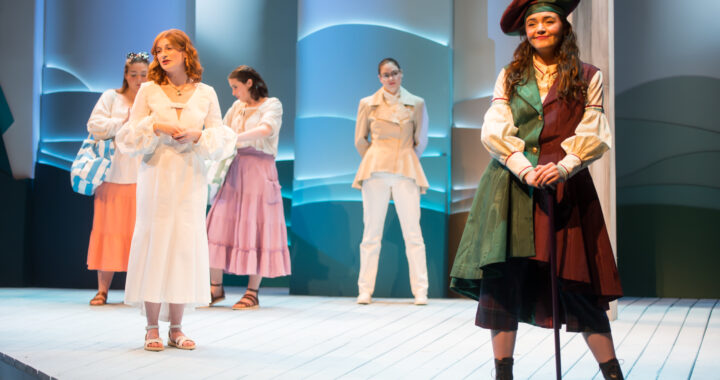History behind the tradition of Devil-Goat Day
3 min read
UMW Digital Archives
By KELLY EMMRICH
Tuesday, April 21 seemed like a regular University Programming Council Bingo Night, but it became much more special. This year Doug Searcy, Vice President of Student Affairs, hosted the Countdown to Devil-Goat Day. The event included prizes which ranged from a picture of the Carmen Culpeper Chappell Centennial Campanile, more commonly known as The Bell Tower, to a certificate for a line-free Devil-Goat Day t-shirt.
As a freshman who has never been to Devil-Goat Day, I did not know what actually happened at the event other than what I had read in an orientation pamphlet and heard from various upperclassmen. I had no idea what to expect, but upon asking what students were most excited for in this years’ Devil-Goat Day, several students said they were excited about the entire event rather than a specific portion.
“I heard there will be a lot of fun games and things to do,” said Mary Grace Cooney, a freshman business administration major. “I know class council has put a lot of hard work into this event so I know it will be fun no matter what.”
Devil-Goat Day was created in 1926 when the junior class was inspired by a professor and picked a green goat as their class symbol. The senior class, not to be upstaged, chose a red devil as theirs. The tradition then became that students who graduate in an odd year are Devils and those who graduate in an even year are Goats. The tradition stuck and is now celebrated annually throughout campus.
In the earlier years of the tradition, the festival would last a week which would be filled with a series of harmless pranks between the Devils and the Goats, such as the Devils stealing the Goats’ live mascot, or singing “I’d rather be a Goat than a Devil,” and vise versa.
Freshman, in earlier years, also had to wear beanies at all times. If they were caught without them by the upperclassmen, the freshman would be forced to do chores for them, such as laundry. The freshmen were only allowed to take off the beanies on Devil-Goat Day, since they were finally initiated into UMW’s most important tradition.
In the 1990s many of the traditions began to lose significance in student life. In 1992, the freshman class, which sponsored the event that year, decided to rejuvenate the event by adding more interactive activities such as a rock climbing and bungee runs. The freshman class succeeded, giving future students the chance to celebrate the campus tradition.
Now Devil-Goat Day takes place on the last Thursday of classes and has several daring games, such as obstacle courses, ride-the-bull, dunk tanks, rock walls, velcro walls and bungee runs. The event also has free food and coveted t-shirts.
One of the newer traditions is to collect a Devil-Goat Day t-shirt from the Class Council. For the 2014 Devil-Goat Day the t-shirt line for the Devils extended from Ball Circle towards Trinkle Hall, and similarly, the Goat’s line extended down campus walk past Virginia Hall. Many students wait in the lines for over an hour, just to collect the t-shirt.
Though this is my first year at UMW, and I have never personally participated in Devil-Goat Day, I feel incredibly connected to the event. Now that the event is here, I could not be more excited to be a UMW student and finally participate in my first Devil-Goat Day.
May the best team win.












I must say it was hard to find your site in search results.
You write great articles but you should rank your website higher in search engines.
If you don’t know 2017 seo techniues search on youtube:
how to rank a website Marcel’s way